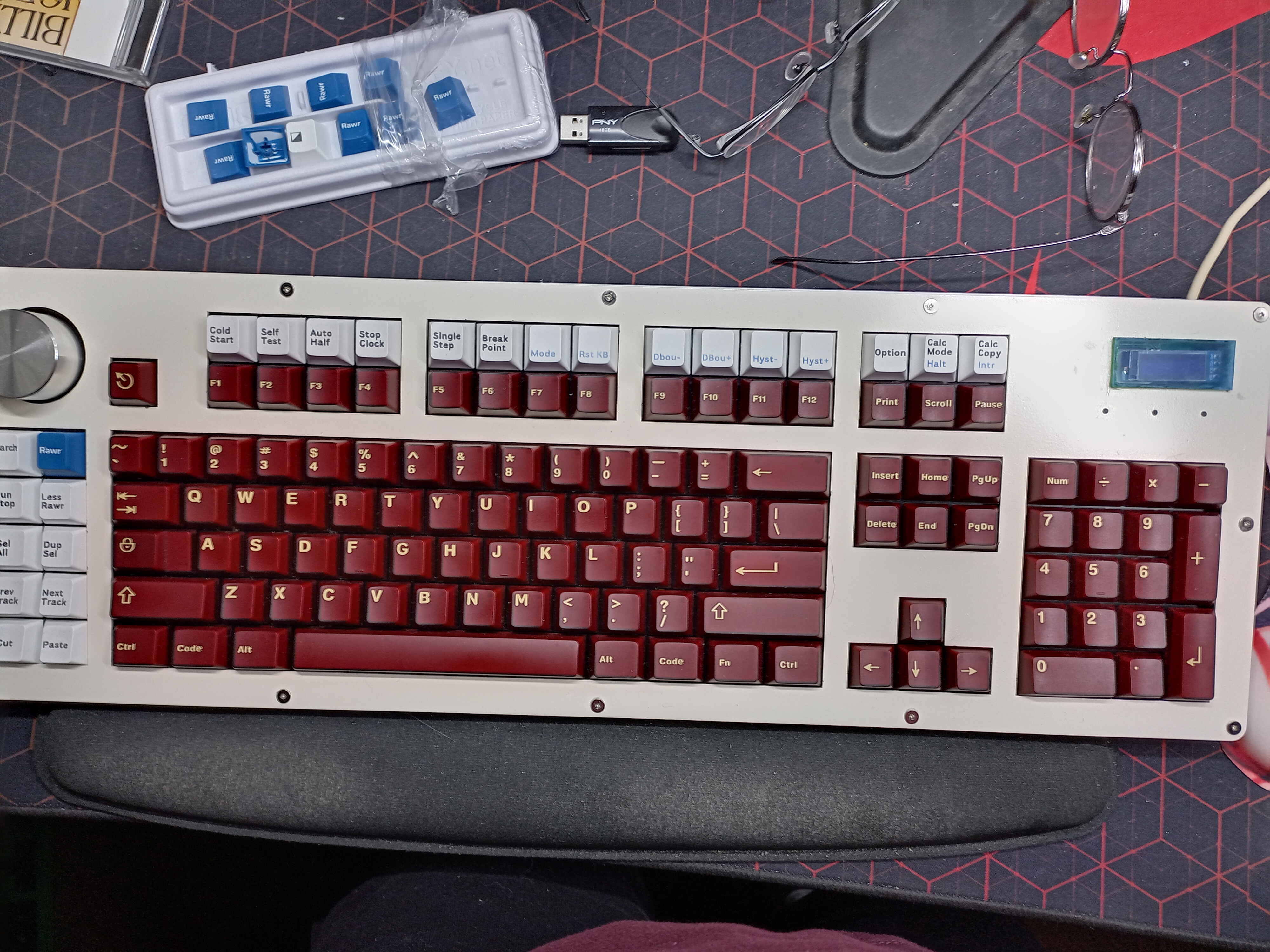I’ve had fairly decent luck with ordinary dry-erase markers and the cheap Neje engraver (possibly 1W, maybe 1.5W, I don’t remember) that’s basically made out of old DVD-ROM stepper motors.
I actually wore out the laser after doing a few hundred caps, so I’m waiting for a new one in the post.
One of the bigger problems is predictable mounting so if you do 10 keys in a row, they’re aligned. A jig helps, like gluing a spare switch to the engraver bed.
Was definitely planning for a jig, though I hadn’t got as far as planning for something to do multiple keys, and yeah, switches would be the obvious choice for mounting securely. Some sort of quick-n-dirty fabricated plate would give the type of predictable spacing that could work. Gotta get that initial placement just right, though. :-)
Obviously our engravers are pretty different models, but what sort of settings are you using, and what sort of shades are you able to pull from the dry-erase? I notice that the “cardinal” and green I was able to get were not a world apart from the old Cherry 9009 keyboards that inspired the GMK set. I also wonder if the chemical composition of Cricut’s “infusible ink,” at least the dye, is much different than dry-erase.
I’ve had fairly decent luck with ordinary dry-erase markers and the cheap Neje engraver (possibly 1W, maybe 1.5W, I don’t remember) that’s basically made out of old DVD-ROM stepper motors.
I actually wore out the laser after doing a few hundred caps, so I’m waiting for a new one in the post.
One of the bigger problems is predictable mounting so if you do 10 keys in a row, they’re aligned. A jig helps, like gluing a spare switch to the engraver bed.
Was definitely planning for a jig, though I hadn’t got as far as planning for something to do multiple keys, and yeah, switches would be the obvious choice for mounting securely. Some sort of quick-n-dirty fabricated plate would give the type of predictable spacing that could work. Gotta get that initial placement just right, though. :-)
Obviously our engravers are pretty different models, but what sort of settings are you using, and what sort of shades are you able to pull from the dry-erase? I notice that the “cardinal” and green I was able to get were not a world apart from the old Cherry 9009 keyboards that inspired the GMK set. I also wonder if the chemical composition of Cricut’s “infusible ink,” at least the dye, is much different than dry-erase.
The black was by far the most reliable. Blue, red, and green were much weaker, blue probably the strongest colour.
The laser only has a “time of pulse” setting-- 6-10ms seemed enough for black, but 20+ ms did better for colours.
Following up, the white caps are lasered.

Nicely done. I hope I can get something to come out that well.